Radio
“Problems cannot be solved by the same level of thinking that created them.”
— A. Einstein

So, as your toddlers are becoming schoolers, and if they are interested in computers, coding, programming etc, there are some very nice programs with which they can learn a little, or very much about programming. Even if they are not interested, there is a lot of different approaches, to animate them to learn anything.
Before you start working on programming with them, be aware that children s attention is quite unstable, and they loose interest quickly, so the point is to make the game out of the programming, to keep them interested. Second, programming requires a considerable measure of logarithmic expressions as you begin getting into the utilization of variables.
Before any other real program, I would surely recommend Hello Ruby play activities, this is a very fine way to teach children about programming, without using computer.
http://www.helloruby.com/play
So, let s go on some really funny programs for your little learners
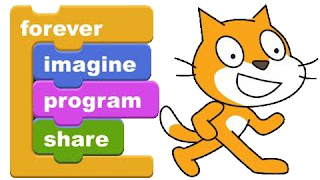
Developed by the MIT Media Lab is a visual programming language for children age 6 and up. It is free, and it runs on Mac, WIndows and Linux computers. Big “part” of the scratch is sharing, kids can share the stories, games and animations that they have made, or download other kid s creation and modify them. It is also available offline. In one word, it is great!
https://scratch.mit.edu/
This application is quite similar to Scratch, except it is made for Ipad, and works only on it.
https://www.gethopscotch.com/
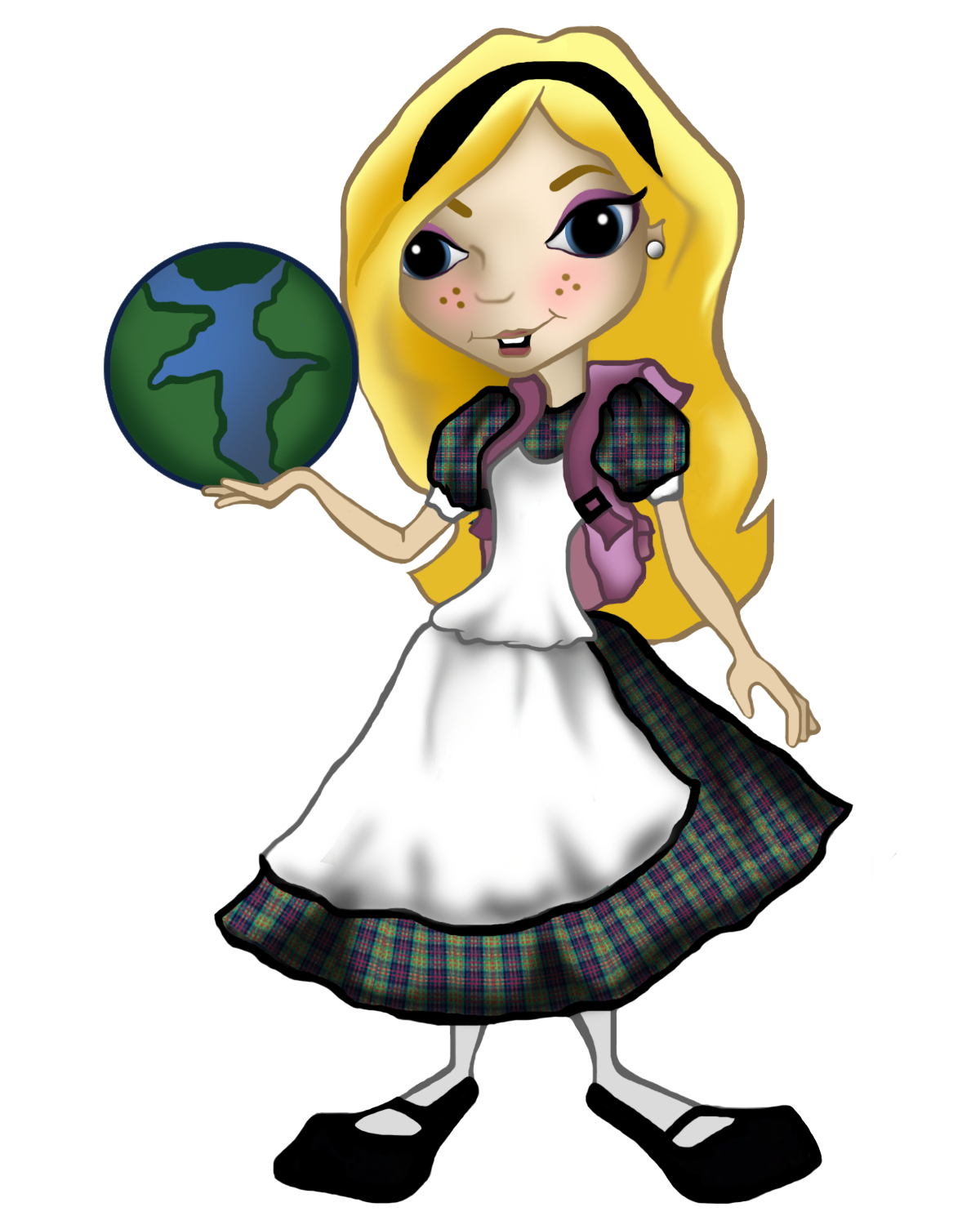
Alice is a free and open source 3D programming environment designed to teach students object-oriented and event-driven programming. With Alice, students drag and drop graphic tiles in order to animate an object and create a program. By emphasizing animations and social interactions, this approach was found to greatly increase the level of student interest in programming.
http://www.alice.org/index.php
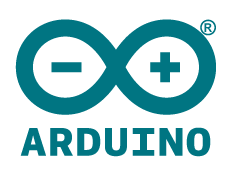 ARDUINO
ARDUINOArduino, well this is quite good toy for older kids, when I say older, I also mean 40+ . It is a platfrom working with both hardware and software components. It is similar to C++.
Projects that are aimed for kids to teach Arduino usually use a modification of Scratch to support simple programming on Arduino hardware. There are some really nice Arduino starter kits for children.
Who does not like LEGO? Well, they also have a branch which besides brick building enables robotics building. Mindstorms Kits include sensors and motors and the programming is command-box. Regarding programming, they also have Scratch roots.
Posted in Kids Tagged with: alice, Arduino, kids, lego mindstorms, mit, programming, scratch

As a mom, who does not know anything about programming, I am looking out for toys which would introduce programming to my little girls.
So the selection went like this:
1. For toddlers to preschoolers
2. Without screen
Maybe it is silly to think about programming, and avoiding screen, applications, and thus programming languages, but I see it as a way of thinking and approach to solving problems. I do not want to push them in IT direction, just want them to be familiar with it, same as I am „learning“ second language with them. Just spontaneously, through the game.
So, as I found out, these are available toys:
• Cubetto
• KIBO
• Robot Turtles
• Hello Ruby
Cubetto
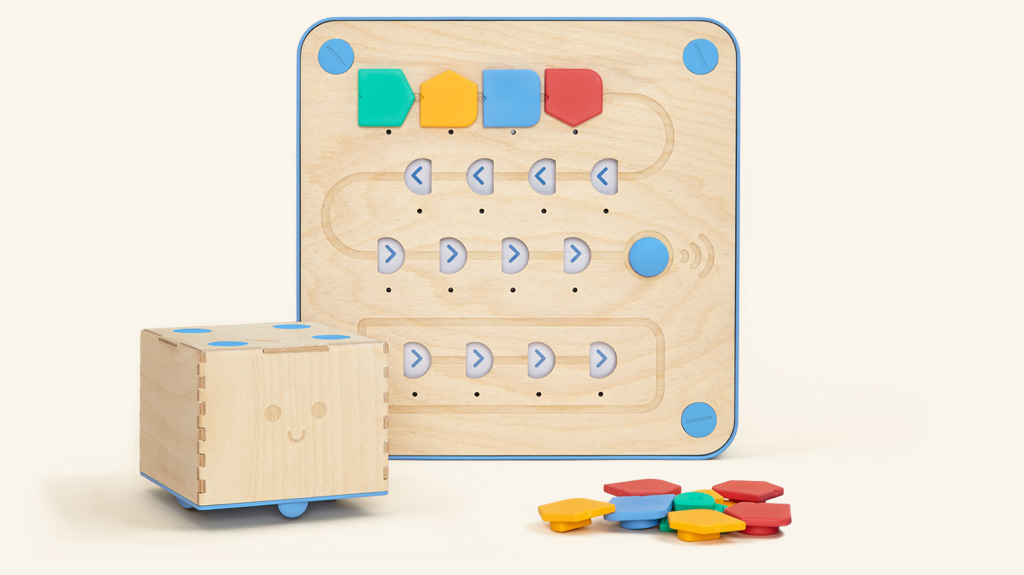 Photo: Primo toys
Photo: Primo toys
Cubetto is designed to teach programming concepts to young kids (3+). The idea is that you have a wooden robot, which is lost and need to come back. For returning it, you have a programming board and 16 programming blocks.
To program, you use the “blocks”–flat plastic pieces with a little handle on the base. These handles fit into the openings on the board, situated in the correct heading. The states of the squares additionally coordinate the course of development. The green pieces are for “push ahead” and point toward the program. Red and yellow pieces turn left and right, and are bended with an indicate either side. At last, the blue “resound” square will run whatever arrangement is set in the rectangle at the base of the board. I am not sure if yo so young children understand the concept of left and right, at least my do not, so I would put stickers on the robot to visually pair left and right with the blocks.
You can place Cubetto anywhere in the room, and program it to go to some direction, or you can use Primo s designed maps and activity book.
KIBO
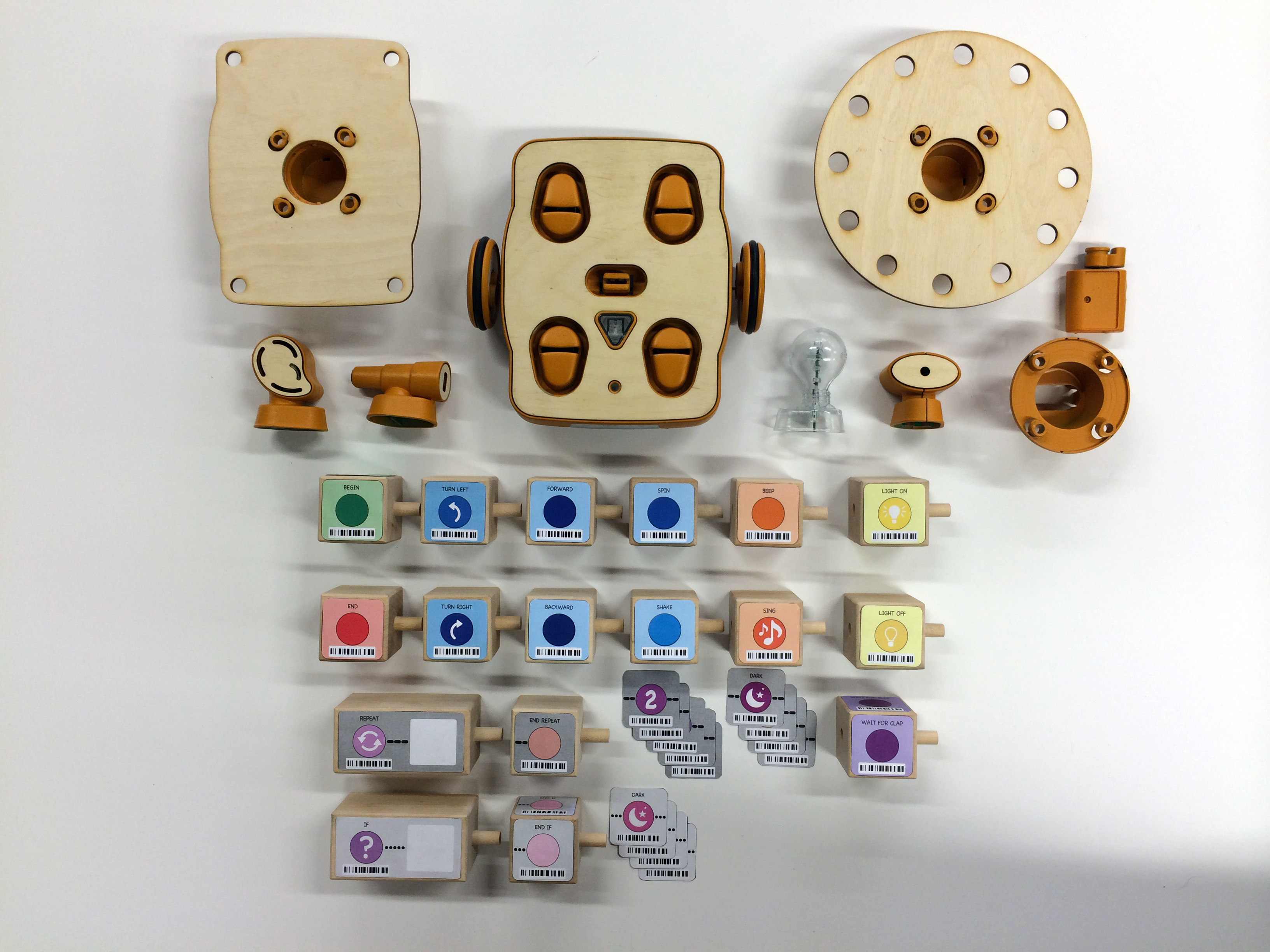 Photo: Vuvuzle.com
Photo: Vuvuzle.com
KIBO is a programming toy aimed at kids from ages four to seven.
The toy makes use of blocks, containing a series of instructions on them, which follow a similar format to the main programming languages, e.g. a stop and start block. You set up a line of these blocks, scan a robot along their surface and in this way control its resulting actions
• Robot Turtles
 Photo: robotturtles.com
Photo: robotturtles.com
Robot Turtules are motivated by the Logo programming dialect, aimed for children 4+.
The idea is to give children a chance to compose programs with playing cards. Players direct the developments of their Robot Turtle tokens on an amusement board by playing essential Code Cards: Forward, Left and Right. At the point when a player’s Robot Turtle achieves a gem they win. In the event that they commit an error, they can utilize a Bug Card to fix a move.
The game has Beginner to Advanced levels – as the players propel they experience obstructions, for example, Ice Walls, and utilize more mind boggling Code Cards (like lasers to dissolve the dividers).
Hello Ruby
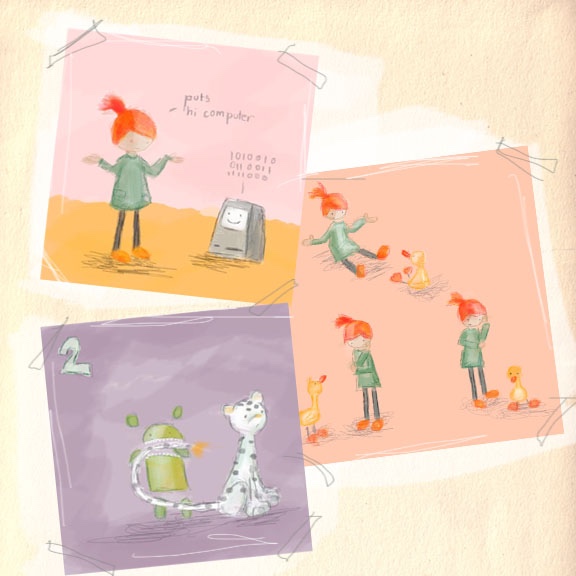
Photo: kickstarter.com
Well, I fell in love with this one. It is a story book about the girl named Ruby who has an fantastic imagination and she goes on adventures. Book and workbook aim to teach the very foundations of technology, and they are aimed for kids 4+. Hello Ruby has also a „screen“ content, a web site with lots of activities.
For me programming is about developing a computational thinking mindset, to help kids to think logically and critically. The skills they acquire while playing with coding toys will benefit them in different areas, and that is the point, not to learn a specific coding language.
Posted in Kids Tagged with: Cubetto, hello Ruby, KIBO, kids, programming, Robot Turtles, toddler